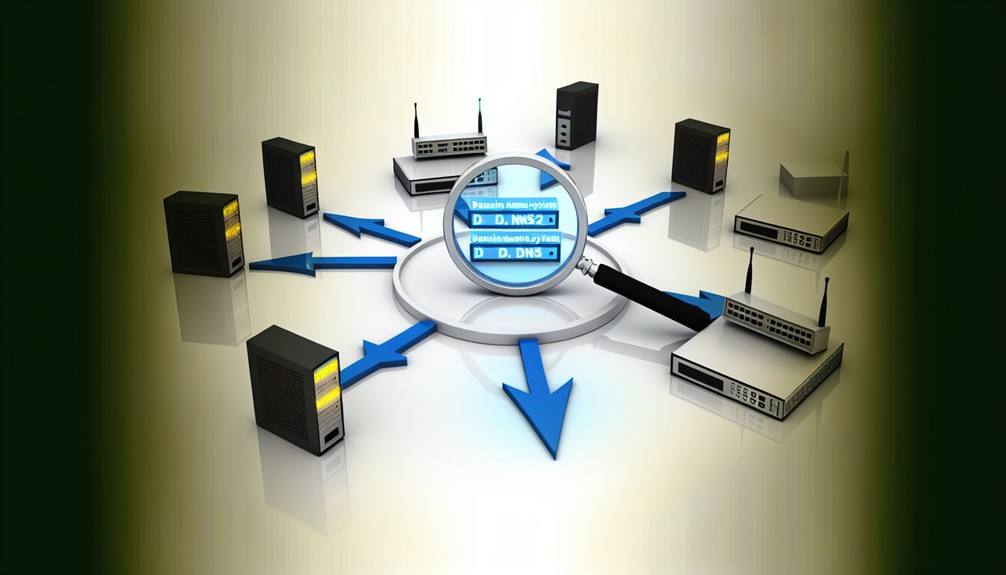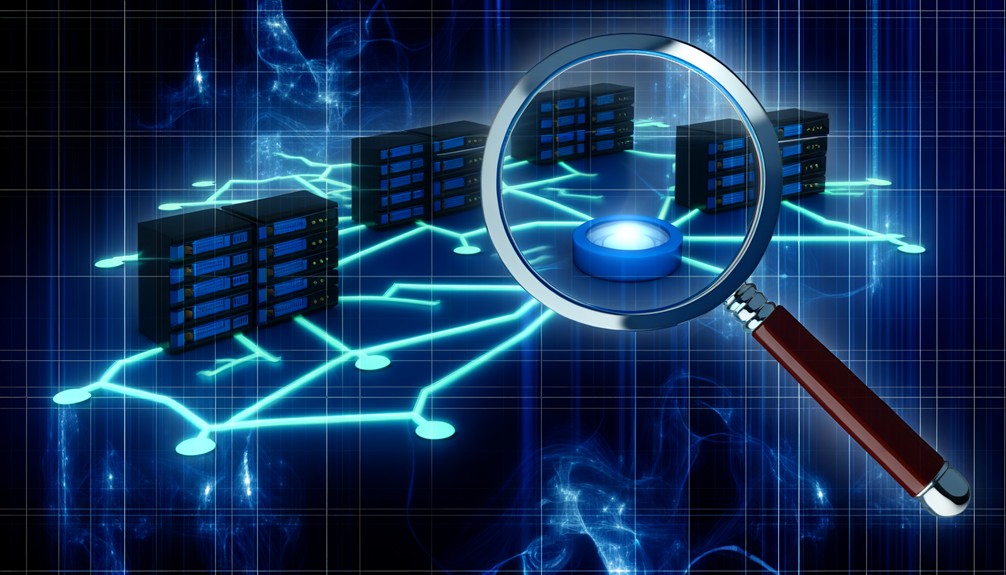When your Smart DNS isn’t working as expected troubleshooting Smart DNS starts by clearing the DNS cache using ‘ipconfig /flushdns’ on Windows or ‘sudo killall -HUP mDNSResponder’ on macOS. Confirm your DNS configuration aligns with your provider’s requirements and that your IP address matches. Check your firewall settings to ensure it’s not blocking DNS traffic and that the necessary ports are open. Conduct network connectivity tests, such as ping or traceroute, to rule out broader issues. Verify device compatibility and consider disabling IPv6 if it’s interfering. Continue troubleshooting to explore advanced solutions that might just solve your problem efficiently.
Key Takeaways
- Clear DNS cache regularly to avoid outdated location data and improve access.
- Ensure device and router configurations align with Smart DNS provider’s requirements.
- Verify DNS server type and manually configure if necessary for optimal performance.
- Conduct network connectivity checks to identify issues unrelated to DNS.
- Disable conflicting features like IPv6 that may interfere with Smart DNS functionality.
Common Smart DNS Issues

When troubleshooting Smart DNS, you’ll often encounter a few common issues that can disrupt your streaming experience. One prevalent problem is DNS caching issues, which can prevent your device from accessing updated location data required for a geo restriction bypass.
To address this, you should clear your DNS cache. On Windows, open Command Prompt and execute ‘ipconfig /flushdns’. For macOS, launch Terminal and input ‘sudo killall -HUP mDNSResponder’. On mobile devices, toggling airplane mode or restarting the device often refreshes the DNS cache effectively.
Another challenge arises when the Smart DNS service fails to bypass geo restrictions. Verify that your IP address is correctly registered with your Smart DNS provider. Since these services rely on your IP to provide the correct DNS settings, a mismatch can lead to access issues.
Re-register your IP through the provider’s website if necessary. Additionally, ensure your DNS settings are configured correctly on your device or router, as improper settings can hinder geo restriction bypassing.
Verifying DNS Configuration

Troubleshooting Smart DNS issues, verifying your DNS configuration is crucial. Start by identifying DNS server types in use. Are you using a public DNS, private DNS, or ISP-provided DNS? Each type has its own configuration validation process. Check the DNS caching settings to ensure outdated entries aren’t causing issues. Clear the cache periodically for accurate DNS propagation.
Review your firewall settings, as they might block DNS traffic. Ensure the correct ports are open to facilitate smooth DNS operations. Your network settings should align with your Smart DNS provider’s requirements, avoiding conflicts that could arise from ISP restrictions.
| Step | Action | Keywords |
|---|---|---|
| Identify | Determine DNS server types in use | DNS server types |
| Validate | Check DNS caching and clear if necessary | Configuration validation, DNS caching |
| Review | Adjust firewall settings to permit DNS traffic | Firewall settings |
| Verify | Ensure alignment with Smart DNS requirements | Network settings, ISP restrictions |
Lastly, scrutinize router configurations. Incorrect settings here can disrupt the DNS resolution process. Adjust them to avoid unnecessary blocks. With these steps, you wield the power to ensure seamless Smart DNS performance.
Network Connectivity Checks

After ensuring your DNS configuration is set up correctly, it’s important to assess the state of your network connectivity.
Start by conducting ping tests to verify if your device can communicate with remote servers efficiently. Open your command prompt or terminal and ping a reliable site like Google. If you notice packet loss or high response times, it indicates issues with your network, not your DNS settings.
Next, examine network latency, which can significantly affect performance. Use tools such as traceroute to map the packet path and identify any bottlenecks or delays in the network. Look for hops with high latency; these are potential problem areas that might require attention from your ISP or network administrator.
Ensure your network’s hardware is functioning optimally. Check that your router and modem are up-to-date and operating without errors.
Restart them to clear potential memory overflow or software glitches, which can impact connectivity.
Device-Specific Solutions

Tackling device-specific solutions requires focusing on the unique configurations and settings that can affect DNS performance on individual devices.
First, consider device compatibility. Ensure your device’s operating system supports Smart DNS. For instance, older firmware may not support the latest DNS configurations, impacting performance. Updating your device’s firmware can be a critical step toward resolving such issues.
Next, delve into performance optimization by examining your device’s DNS settings. Navigate to the network settings and manually enter the Smart DNS addresses provided by your service. This precise configuration can enhance speed and reliability, bypassing potential auto-configuration issues.
Make sure to disable any conflicting features like IPv6, which can interfere with Smart DNS functionality if not supported by your service.
Moreover, verify that your device’s firewall or security software isn’t blocking DNS traffic. Temporarily disable these features to test if they’re the root cause of any performance hiccups.
Lastly, clear your device’s DNS cache to remove outdated data that could be causing resolution errors. By meticulously addressing these device-specific elements, you empower your device to harness Smart DNS with optimal performance, ensuring seamless access to geo-restricted content.
Advanced Troubleshooting Steps

Mastery of advanced troubleshooting steps can significantly enhance your troubleshooting Smart DNS experience.
Begin by addressing DNS caching issues, which can cause outdated information to linger. Clear your device’s DNS cache to ensure you’re accessing the most recent data. On Windows, open Command Prompt, type ‘ipconfig /flushdns’, and hit Enter. For macOS, use Terminal and type ‘sudo killall -HUP mDNSResponder’.
Next, investigate ISP restrictions that might interfere with your Smart DNS. Some ISPs employ transparent proxies or DNS hijacking, redirecting your DNS requests to their servers. To counter this, manually configure your DNS settings on your device or router, ensuring they point to your Smart DNS provider’s servers.
Evaluate your router configurations, as improper settings can impede DNS performance. Access your router’s admin panel and verify that DNS settings align with your Smart DNS service. Check for firmware updates that could resolve compatibility issues.
Lastly, scrutinize firewall settings. Firewalls may block DNS requests or ports essential for Smart DNS functionality. Temporarily disable the firewall for testing, or add exceptions for specific DNS IPs and ports.
Conclusion
In delving into Troubleshooting Smart DNS issues, you’ve explored various troubleshooting steps, from verifying DNS configurations to conducting network connectivity checks. Remember, the theory that Smart DNS problems often stem from misconfigurations holds substantial truth. Device-specific solutions and advanced troubleshooting further underscore the importance of precise settings. By maintaining a detail-oriented approach, you’re not only resolving immediate issues but also fortifying your network’s reliability. Keep investigating and adapting, as the dynamic nature of DNS requires ongoing vigilance and problem-solving.

